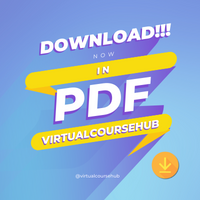Overview
CS50: Introduction to Computer Science is a comprehensive course that provides an introduction to the world of computer science and programming. It covers a wide range of topics, including problem-solving, algorithms, data structures, abstraction, encapsulation, resource management, security, and web development. The course aims to teach students how to think algorithmically and solve problems efficiently. It also introduces popular programming languages like C, Python, and JavaScript, along with their respective frameworks and libraries.
Course Index
- Programming in C
- Web Development
- Algorithms and Data Structures
- Practice
- Wrap-up
- Quiz
Learning Programming in C
Module 1 of the CS50: Introduction to Computer Science course focuses on programming in the C language. C is a powerful and widely-used programming language that forms the foundation for many other languages. In this module, you willlearn the basics of programming in C, including variables, loops, conditionals, and functions. You will also gain an understanding of how memory works in C and how to use arrays and strings. By the end of this module, you will have the skills necessary to write simple programs in C and understand some of the fundamental concepts in computer programming.Overview Web Development
In Module 2 of CS50: Introduction to Computer Science, we delve into the fascinating
world of web development. This module provides a comprehensive introduction to the
foundations and concepts behind building dynamic websites and web applications.
Through a combination of theoretical exploration and hands-on projects, students will
gain valuable skills and knowledge that will equip them to create their own web-based
projects.
Overview Algorithms and Data Structures
In Module 3 of the CS50 course, we delve into the fascinating world of algorithms and
data structures. Algorithms are step-by-step instructions that are used to solve
computational problems, while data structures are ways of organizing and storing data
in a computer's memory.
Overview Practice
In the this lesson, we'll put theory into practice through hands-on activities. Click on the items below to check each exercise and develop practical skills that will help you succeed in the subject.





No hay comentarios:
Publicar un comentario